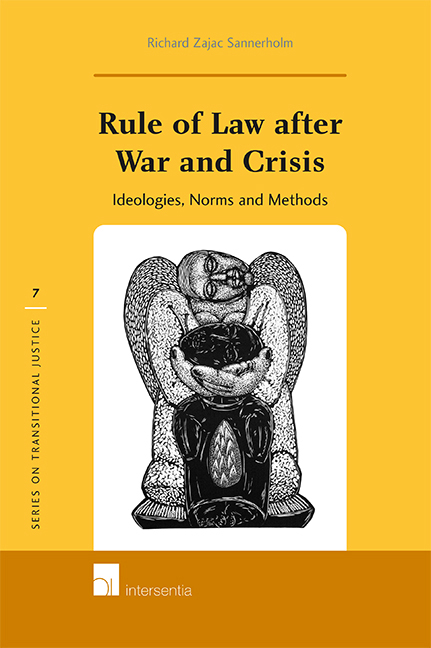4 - Law Reform and Constitutional Reform
Published online by Cambridge University Press: 16 December 2020
Summary
INTRODUCTION
The previous chapters examined the conceptualisation of the rule of law in war to peace transitions. What has emerged from the investigation of policy documents, UN Security Council mandates and operational directives is a concept that appears to be a situational response. In other words, the rule of law is defined and formed to fit challenges and problems as identified by international actors specifically in war-torn societies. The following chapters will proceed to consider how the rule of law is put into effect by way of tangible actions.
The first topic for consideration is law reform. This is one of the top priorities of rule of law reform in those societies torn apart by war. Countries such as Afghanistan, Liberia and Kosovo underwent an intensive law-making activity at the start of each transitional process. The typical mode of law reform involves providing technical support and legal advisory services to governments, assisting them in ratifying or acceding to international conventions, and helping legislatures in the draft ing of new laws in accordance with international standards and benchmarks. Several law reform initiatives are also founded upon laws drafted in other state-building missions.
Numerous parallels, but also substantial differences, exist between the approaches of earlier segments of rule of law reform and those rule of law reforms that are effected in war-torn societies today. One crucial difference is that the primary source for transplants in war to peace transitions does not rely as much as before on individual countries that happen to have an interest in the region in question – that is, through trade relations or historical ties (though this still occurs). The process of law reform and constitution-making in these societies draws more on international law, standards and benchmarks.
International law is emphasised by the UN Secretary-General's listing of the normative sources for rule of law reform. The normative framework is presented as that consisting of various branches of international law – criminal, refugee, human rights, and humanitarian law. As seen in the previous chapter, the intimate link between international human rights law and the rule of law concept for war-torn societies is held to provide legitimacy and credibility in reforms.
- Type
- Chapter
- Information
- Rule of Law after War and CrisisIdeologies, Norms and Methods, pp. 103 - 152Publisher: IntersentiaPrint publication year: 2012



